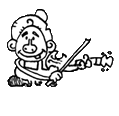Thanks-For-Fiddling Offer
Want to upgrade from your current subscription?
If you currently have a paid membership, you can upgrade and the balance goes towards an ultimate membership ?
Subscription details
If you buy an Ultimate Subscription, it includes the Irish Fiddle Variation course for one year (along with access to the main course, Art of Fiddling and all practice materials).
So if you are only interested in the Irish fiddle variation course, you would want to just get that. If you want access to all the other lessons and materials in the course, you’d want to get the Ultimate Subscription.
You may be thinking, “This sounds confusing. Why did you set it up that way?” Good question! The reason for this setup is that I’d like different people to be able to use FiddleHed in a way that best suits them.
Intermediate players may not need the entire course. They may only want the Irish fiddle variation course or the upcoming Improvisation course. Click here if you want to check out the Irish fiddle variation course.
Other people may want full access to the course and so they’d be better off with an Ultimate Subscription. For instance, they might want to learn about Irish fiddle variation but then apply it to other styles of music I teach, like old-time or klezmer.
Do you have any more questions about the course?
If so, please leave in a comment below. Lots of other people might have the same question. If you’re unsatisfied with the course or want something different than what you purchased, just email us at [email protected].
Money-back Guarantee
Try out the course, and if you’re not satisfied, just email me within thirty days of purchase and I’ll refund your money ?
